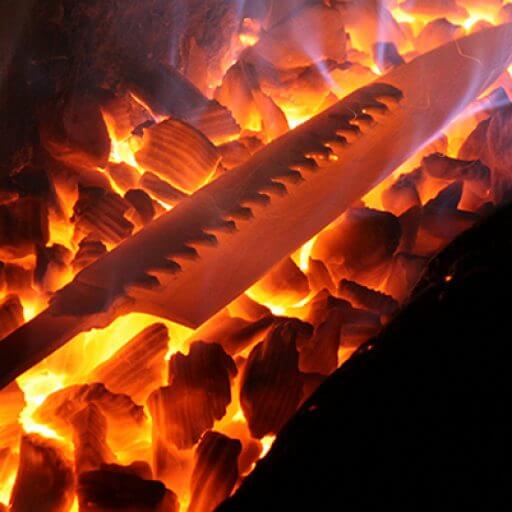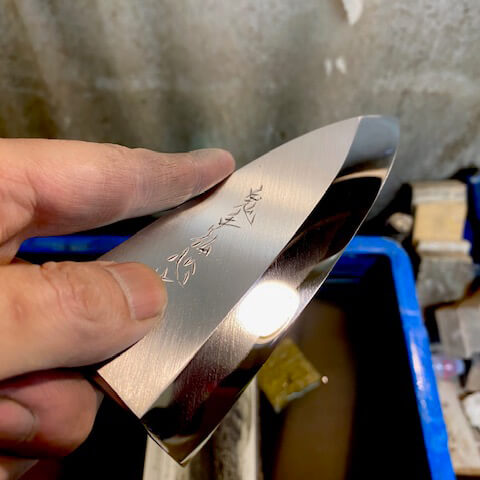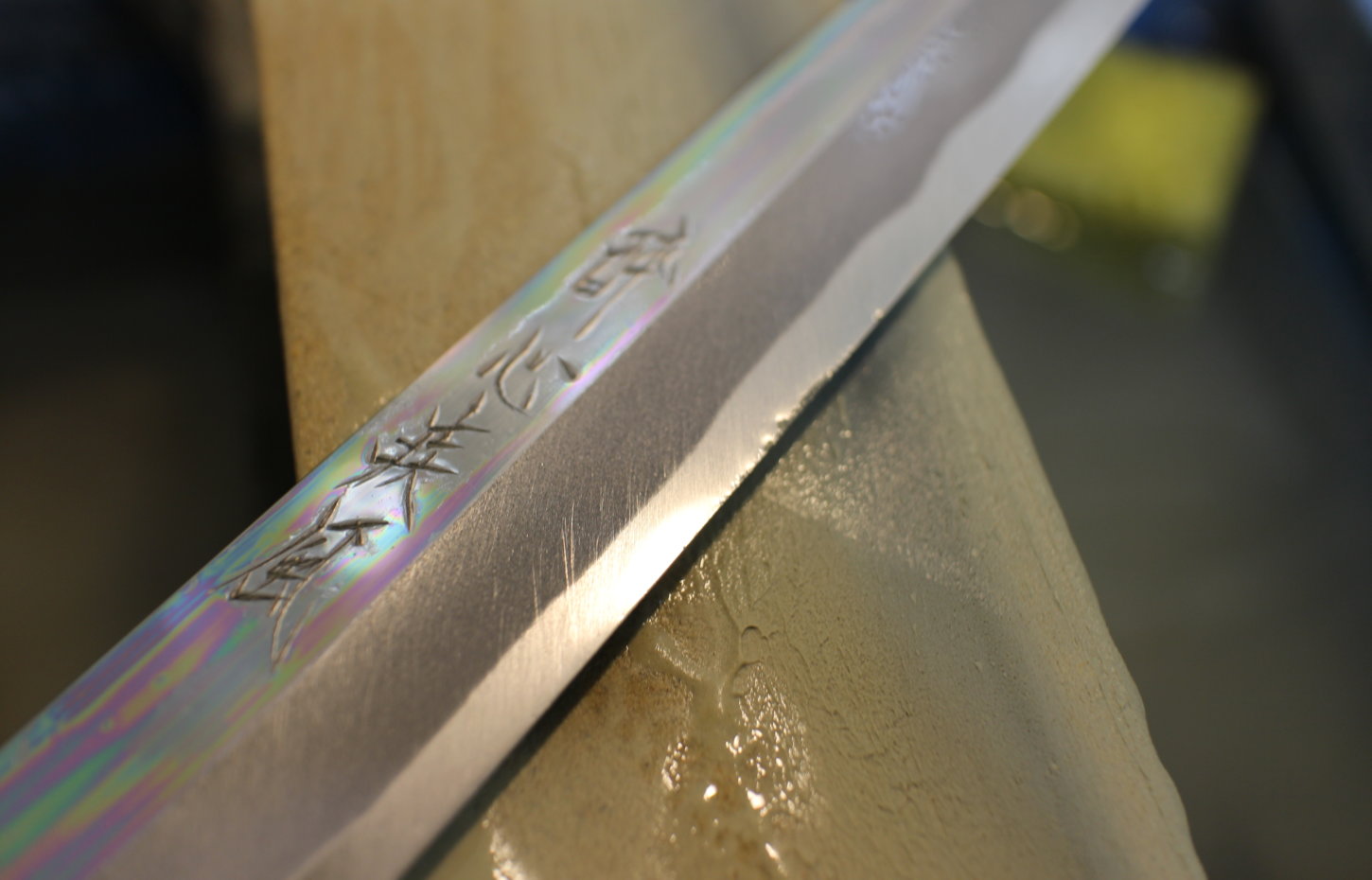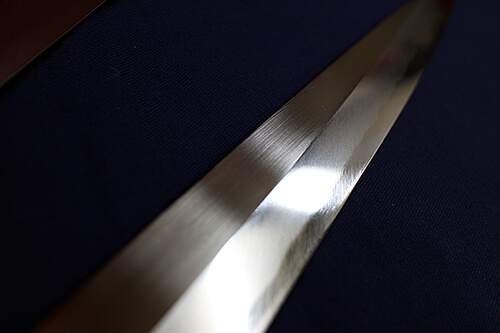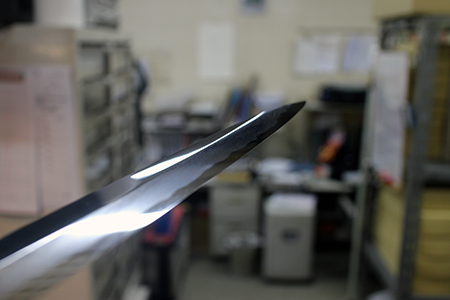How about “Improving the Tip Performance of a Gyuto Knife”?
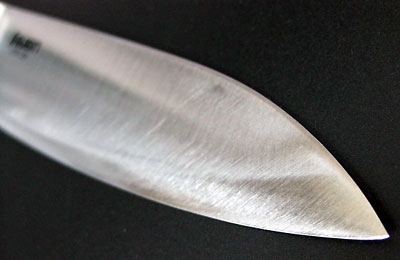
I’ve noticed that the performance of my favorite gyuto knife has been declining lately.
As a knife maker, I feel like I’m starting to sound like a chef (LOL).
When you continue sharpening to maintain the original edge, the entire blade can become thicker over time.
What happens when the blade gets thicker?
The knife struggles to pass through food easily, and you might feel like it’s not cutting well because the thickness gets in the way before the actual edge can bite into the food.
So, how do we solve this? Well, you could buy a new knife (LOL).
A new knife will have a perfectly sharpened edge!
…Alright, enough joking, let’s get serious.
To solve this, you need to thin the blade itself, not just the cutting edge.
This involves grinding away the extra metal from the blade to restore its sharpness and efficiency.
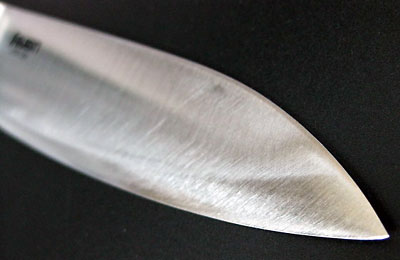
I took a photo of the blade after sharpening it with a coarse whetstone.
This is a double-beveled gyuto knife, but I sharpened it to a single bevel.
I widened the sharpening area at the tip to improve its cutting performance.
Although it might seem odd to seek better cutting performance at the tip for a Western knife, which is primarily designed for push cuts, I can’t help but apply some Japanese sharpening techniques.
Western knives often have lower hardness, so thinning the edge too much can make it weak.
The steel at the tip might bend or warp easily.
Thus, it requires a technique similar to creating a Hamaguri (clamshell) edge, keeping some thickness while thinning the edge.
This is the subtle art of sharpening.
The knife I sharpened still has a wide blade, so I could sharpen it like this, but if it narrows, I would eventually need to thin it all the way to the spine.
Of course, this would erase any brand markings or prints!
From this state, you can either use a medium grit whetstone or just sharpen the edge with a finishing stone. The final touch is up to your preference, but if you make it shiny, food will stick to it.
If you want a shiny finish, you can try adding a strong Hamaguri edge to reduce food sticking.
However, given the thickness of a gyuto, you might not achieve much of a Hamaguri effect.
Even so, this Hamaguri edge aims to thin the edge while maintaining strength and providing a slight opening cut.
You won’t understand this until you use it, but thinking about these details makes sharpening fascinating, doesn’t it?
If you get it right, you’ll have a tool that works perfectly for you!
It’s great to have unique tools, but mastering the same tools better than others can also be satisfying.
Sharpening might be like customizing cars or motorcycles.
Maybe that’s why so many men are drawn to knives. There’s an allure to it!
- 2010-04-13
